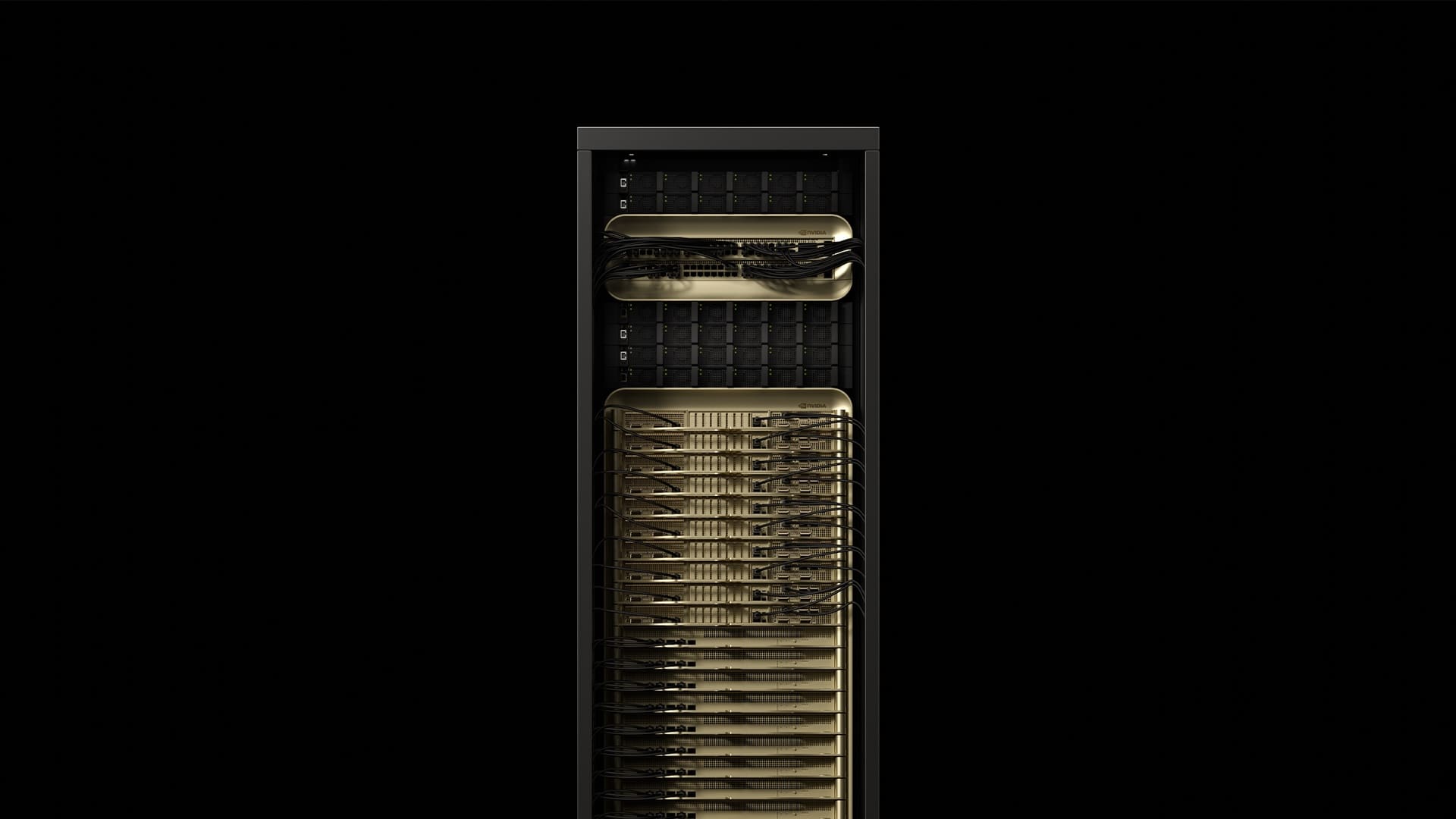The new power architecture reduces peak electrical demand caused by intensive AI loads by 30% and alleviates pressure on the electrical grid.
As the race for large-scale artificial intelligence accelerates, data centers are starting to consume electricity at rates that challenge traditional power grids. With the emergence of large language models (LLMs) and massive synchronized training loads, consumption spikes have shifted from sporadic events to a recurring pattern, which can cause electrical resonance, transformer stress, and efficiency losses across the network.
To address this issue, NVIDIA has introduced a revolutionary integrated energy management solution in its latest GB300 NVL72 racks. This system relies on power supplies with capacitive energy storage and an intelligent load-smoothing algorithm. Already integrated into GB200 systems and now expanding with the new GB300, it reduces peak electric demand experienced by the grid by up to 30% and stabilizes abrupt fluctuations caused by synchronization of thousands of GPUs.
Unlike traditional data center loads, which typically operate asynchronously with varying energy profiles, AI training—such as with Megatron, GPT, or multimodal vision models—runs hundreds or thousands of GPUs synchronized precisely. They switch between idle and intensive phases simultaneously, creating volatile consumption curves with rapid ramps, which the electrical grid cannot respond to swiftly.
According to NVIDIA, power generation resources can take anywhere from 1 to 90 minutes to respond to sudden demand increases. During this period, the electrical system must absorb instability, leading to issues like voltage drops or surges that affect not only the data center but other connected loads as well.
The new design of the GB300 NVL72 introduces a power supply with three key elements:
- Power capping with ramp control: during startup, a GPU doesn’t immediately access full power. Instead, a gradual ramp-up synchronized with grid tolerances is used.
- Capacitive energy storage: high-capacity capacitors integrated into each power supply smooth out consumption spikes by charging during low-demand phases and discharging during micro-picos. Each GPU has an estimated reserve of about 65 joules.
- Dissipation mode (“burner”): if training abruptly ends, a special dissipation mode simulates continuous consumption on GPUs, preventing a sharp demand drop and allowing a smooth transition for the grid.
These combined mechanisms enable the rack’s overall consumption profile to shift from violent peaks to a flat and steady curve, enhancing stability.
Real-world testing with actual training loads demonstrated clear improvements. Comparing a GB200 system with a conventional power supply and a GB300 system with the new energy storage PSU showed up to a 30% reduction in peak demand on the electric grid without affecting computational performance. Additionally, fluctuations in AC input current are significantly lower, reducing stress on transformers and avoiding the need to oversize electrical installations.
This innovation allows data center operators to resize their energy infrastructure closer to average consumption, avoiding oversizing for peak loads. The result is more racks per room, lower energy costs, and fewer indirect emissions.
As AI data centers grow exponentially in energy consumption, technologies like the GB300 NVL72 can be transformative. They improve operational efficiency and promote electrical sustainability.
By integrating distributed energy storage at the rack level, they decrease generation system pressure, prevent overbuilding, and enhance the energy resilience of data centers.
The collaboration between NVIDIA and LITEON Technology, the manufacturer of the power supply, was crucial in miniaturizing the system, ensuring that approximately half of the internal volume is dedicated to capacitive storage without compromising computational density.
More than just a power source, the GB300’s integrated approach becomes a strategic tool for harmonizing data centers with electrical system capabilities. In an era where AI demands unprecedented computing power and electrical grids show signs of saturation, this innovation addresses not only technical needs but also energy and environmental responsibilities.
NVIDIA’s technologies for the GB300 NVL72 optimize GPU performance while transforming the rack into a smarter, more collaborative actor within the global energy ecosystem—a necessary move for the future of AI and sustainable electricity.
via: developer.nvidia.com

